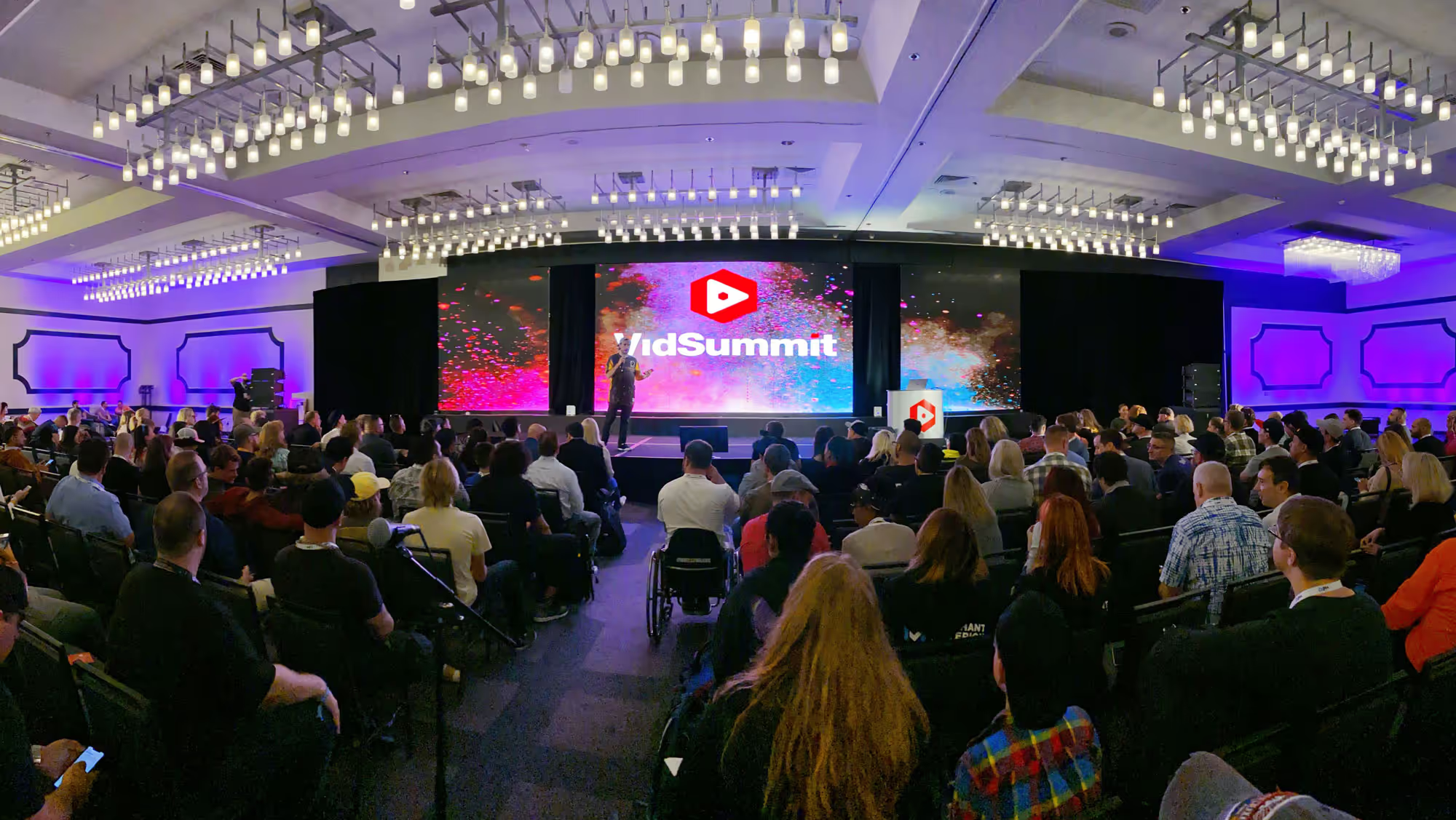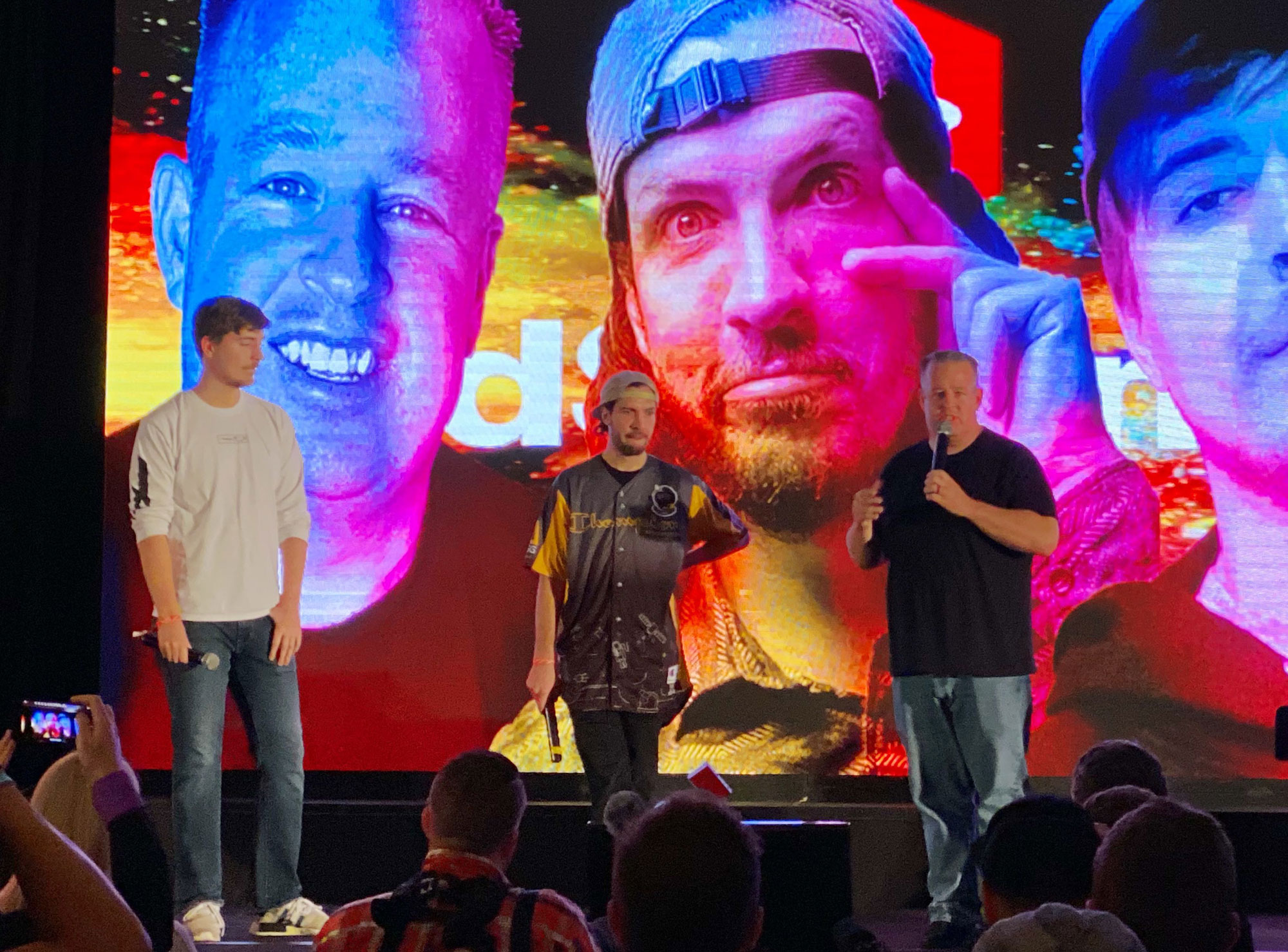
Articles
3 Takeaways From VidSummit 2019 That Video Content Creators Can’t Ignore
October 29, 2019

As the video content creator at Trainual, I had the opportunity to attend 2019’s VidSummit—the top YouTube and video marketing conference for creators, brands, and agencies.
This year’s conference featured keynotes and sessions by heavy hitters like Casey Neistat, Jimmy Donaldson aka “Mr Beast,” Pat Flynn, Peter McKinnon, and Daniel Harmon.

No doubt you can find plenty of vlogs and video recaps from the show, (it was an online video conference after all), but I wanted to share the top takeaways in a good old-fashioned blog, too!
Why video titles matter more than ever
Whether you write blog posts or create YouTube videos, your efforts are useless if they don’t reach the intended audience, and your title (or headline) is the easiest way to do that.
Titles are more important than ever in a world overrun by clickbait. Every single creator competes for views and their target metric is an increased CTR (Click Through Rate).
CTR is the percentage of people that see your title and actually consume the content you created by, you guessed it, clicking through. Different platforms have different terms such as downloads, engagements, plays, or reads, but the more commonly recognized term here is simply “views.”
Offering a stronger or more polarizing opinion is a good way to get viewers to choose your video over others in the same niche. For instance, “I Don’t Recommend Buying a New Car” won’t get as high of a CTR as “Why I Will Never Buy a New Car Again.” The second title commands the viewers’ attention by piquing their curiosity.
Want to increase your own CTR? Use stronger opinions in your titles.
Every creator needs a pitch deck
Want to work with other brands or content creators? Stand out from the crowd by creating a pitch deck for your potential partner.
It’s funny how to sell yourself as a video creator, you may have to create a PDF or Keynote, but it’s true. This is how brands and agencies work. A short PDF presentation showcasing your brand and what you stand for should include things like your personal “why”—meaning goals and reasons for creating content, some hard metrics around your reach and engagement, and a breakdown of audience demographics if you have them.
At one of the keynotes,YouTuber Andru Edwards said, “Brands are not brands.”
I couldn’t agree more. The reason why Trainual’s marketing has worked from Day 1 is because it was always about more than just the product and the brand. We led with very personal, “under-polished” content from our founder, Chris Ronzio, that gave a behind the scenes look and feel into the real stories, real people, and real purpose behind the company.
From a video creator perspective, the more authentic your narrative and more focused you are on providing value to the people behind or shopping for the product, the more successful you’ll be. And that is just as (if not more) important to communicate in your pitch deck and video strategy as the numbers.
Your content model should include these 3 pillars
If you’re producing content to build and maintain and audience, here are three types of content you should be creating:
1. Hero content (go big or go home)
This style of material is solely designed to reach the masses. Hero content usually contains pop culture references and is intended to generate views. It’s a great way to get a whole lot of eyes on what you’re doing, so be sure it’s high quality.
For example:
2. Help content (informational)
Another way to find new viewers is by creating valuable content specifically designed to inform or teach your audience. Make sure the information is optimized for search for better performance.
For example:
3. Hub content (community following)
Once a member of your community wants to get to know more about you and/or your brand, you need to have the material there just for that. Hub content is not aimed to reach out to new people or go viral. It is targeted directly to please the audience you already have.
For example:
Combining these three pieces of content creates the perfect funnel for anyone who discovers your videos. Whichever video they stumble upon, having this mix in place increases the likelihood of garnering their support in the long run.
It’s no secret that online video is getting more and more saturated. In 2019, 300 hours of video are uploaded to YouTube every minute and nearly 5 billion videos are watched on Youtube every single day. Streaming services are on the rise, and there’s Facebook Watch, IGTV, TikTok, and almost every other social platform prioritizing video content in their algorithms and vying for our attention.
As a creator, don’t let these stats scare you from continuing to produce content, but definitely let them guide you toward improving your craft and bettering your video marketing skills.
Hopefully through my experience and VidSummit takeaways, you’ve learned at least one new thing that you can apply to your own content strategy as you develop your style, build your audience, and establish your brand. For more tips from me, follow along on YouTube.
Similar Blog Posts











